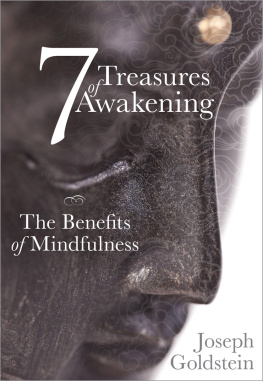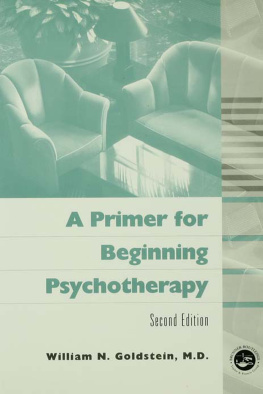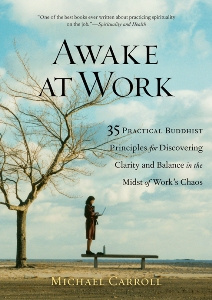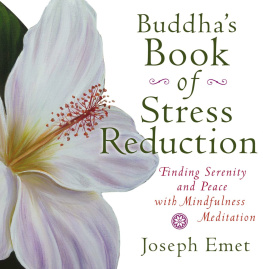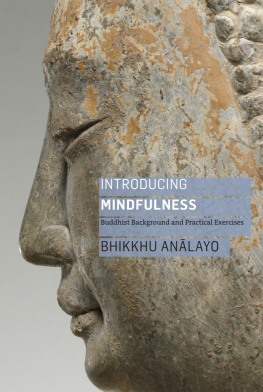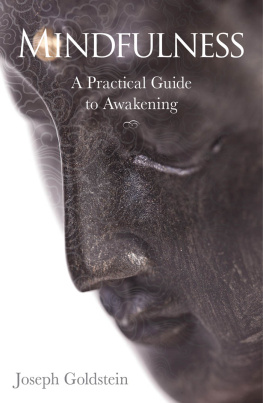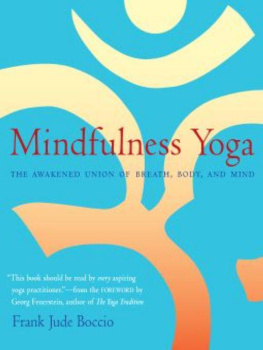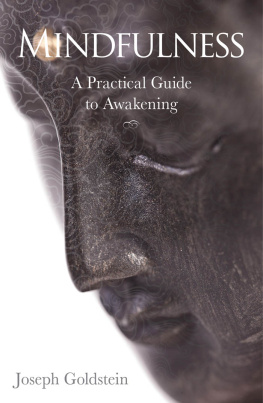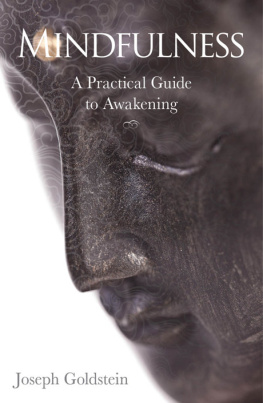7 Treasures of Awakening
The Benefits of Mindfulness
Joseph Goldstein
Excerpted from the book
Mindfulness: A Practical Guide to Awakening
Sounds True
Boulder, Colorado
Contents
Introduction
THE SATIPAHNA SUTTA DESCRIBES MINDFULNESS of the seven factors of awakening. These qualities of mind are referred to as the seven treasures of a Tathgata, the term used by Buddhas when speaking of themselves, and they are said to be unique to the teachings of a Buddha.
All those Arahant Buddhas of the past attained to supreme enlightenment by abandoning the five hindrances, defilements of mind which weaken understanding, having firmly established the four foundations of mindfulness in their minds, and realized the seven factors of awakening as they really are.
The Buddha called these seven factors antihindrances because they counteract those forces in the mind that keep us in delusion. They are called factors of awakening because they incline the mind toward nibbna, toward freedom. What are these seven factors? They are mindfulness, discrimination of states, energy, rapture, calm, concentration, and equanimity.
There is an entire section of the Samyutta Nikya, the Connected Discourses, devoted to these seven links of awakening. A few excerpts from these texts will give some sense of the importance the Buddha placed on them:
Bhikkhus, I do not see even one thing that, when developed and cultivated, leads to the abandoning of the things that fetter, so effectively as this: the seven factors of enlightenment.
Bhikkhus, the seven factors of enlightenment, when developed and cultivated, are noble and emancipating; they lead the one who acts upon them to the complete destruction of suffering.
Then a certain bhikkhu approached the Blessed One... and said to him: Venerable sir, it is said, an unwise dolt, an unwise dolt. In what way, venerable sir, is one called an unwise dolt?
Bhikkhus, it is because one has not developed and cultivated the seven factors of enlightenment that one is called an unwise dolt.
Venerable sir, it is said, wise and alert, wise and alert. In what way, venerable sir, is one called wise and alert?
Bhikkhus, it is because one has developed and cultivated the seven factors of enlightenment that one is called wise and alert.
The instructions in the Satipahna Sutta for contemplating these factors follow a format analogous to the one for contemplating the hindrances, except instead of abandoning them, one cultivates them.
Again, monks, in regard to dhammas one abides contemplating dhammas in terms of the seven awakening factors. And how does one in regard to dhammas abide contemplating dhammas in terms of the seven awakening factors?
Here, if the mindfulness [and all the others in turn] awakening factor is present, one knows there is the mindfulness awakening factor present in me; if the mindfulness awakening factor is not present, one knows, there is no mindfulness awakening factor in me; one knows how the unarisen mindfulness awakening factor can arise, and how the arisen mindfulness awakening factor can be perfected by development.
How do we put these instructions into practice? The Buddha said that just as the dawn is the forerunner and precursor of the arising of the sun, so too, good friendship, association with the wise, and careful attention are the forerunners and precursors of the arising of the factors of enlightenment. This is where we start: hearing the teachings and paying attention. Many discourses teach that the four foundations of mindfulness, when developed and pursued, bring the factors of awakening to perfection. And, as we will see, these seven factors form a progression, each one leading to the next. So if we prime the pump of the enlightened mind and practice the first of the awakening factors, all the rest follow along.
1
Mindfulness
NOT SURPRISINGLY, THE FIRST OF the factors of enlightenment, and the one that starts the wheel of awakening rolling, is mindfulness. In order to know whether, as the instructions of the sutta indicate, mindfulness is present or not, we first need to know what mindfulness actually is. As mentioned earlier, mindfulness is the translation of the Pali word sati, a word profoundly rich in meaning and application. Sati is derived from the root meaning to remember, but its meaning goes far beyond our usual notion of memory.
THE FOUR QUALITIES OF MINDFULNESS
R. M. L. Gethin, a highly regarded contemporary Buddhist and Pali scholar, carefully analyzed all the ways sati is used in the suttas and the Abhidhamma, and he summed up the various expressions and manifestations of mindfulness in four basic applications. Although in its most general sense, mindfulness signifies attentiveness to the present, this attentiveness expresses itself in some very specific ways. And as we look at each one of these aspects of mindfulness, we can understand why it is the one factor of mind that is useful in every situation. While the other factors of enlightenment can be out of balance with one another, there can never be too much mindfulness. In fact, it serves to both bring about and balance all the other factors.
Not Forgetting
The first application of mindfulness is the quality of not forgetting, not losing what is before the mind in the present moment. Mindfulness stays firmly with the object without wobbling or drifting off. We could call this aspect the stability of awareness because it stays as steady as a post set firmly in the ground. It also serves to bring us back to the object each time we get lost, like a signpost. When the momentum of mindfulness is well developed, it works like a boomerang; even if we want to distract ourselves, the mind naturally rebounds to a state of awareness.
Presence of Mind
The second aspect of mindfulness is its quality of standing near the mind, which manifests as being face-to-face with whatever is arising, rather than giving it only sidelong glances. Directly facing what is arising guards the gates of the sense doors. In street parlance, we might say that by standing near, mindfulness is watching our backsor perhaps more accurately, watching our frontsso that were not seduced by the show of passing phenomena. The Genjo Koan, a well-known teaching in the Zen tradition, says, To carry yourself forward and experience myriad things is delusion. That myriad things come forth and experience themselves is awakening.
Remembering
The third aspect of sati is one that we dont often associate with mindfulness, but, in fact, it hearkens back to its root meaning of remembering. Here, mindfulness calls to mind, or remembers, what is skillful and what is not, what is inferior and what is refined, what is beneficial and what is harmful. It is this aspect of mindfulness that makes it possible to follow the Buddhas instruction to let go of and abandon what is unskillful and to develop and cultivate what is skillful.
Mindfulness thus becomes a key factor in strengthening our inner moral compass. If we dont remember and call to mind what is wholesome and what is not, then we simply toss about on the waves of habitual mind states, often acting out the latent tendencies of different defilements. This particular facet of mindfulness is closely related to the arising of two mental states the Buddha called the guardians of the world. In Pali, they are called hiri and ottappa, often respectively translated as moral shame and fear of wrongdoing, or sometimes as self-respect and conscience.
These two factors are easily misinterpreted and therefore often ignored in our culture. But in so doing, we are discarding qualities that provide the basis for great beauty and strength in our lives. Its interesting to reflect on the English meanings of these two terms. In our complex cultural conditioning of race, class, and religion, shame and fear have often been used as vehicles and expressions of oppression. In these instances, we dont see shame or fear as particularly wise or compassionate mind states.
Next page
